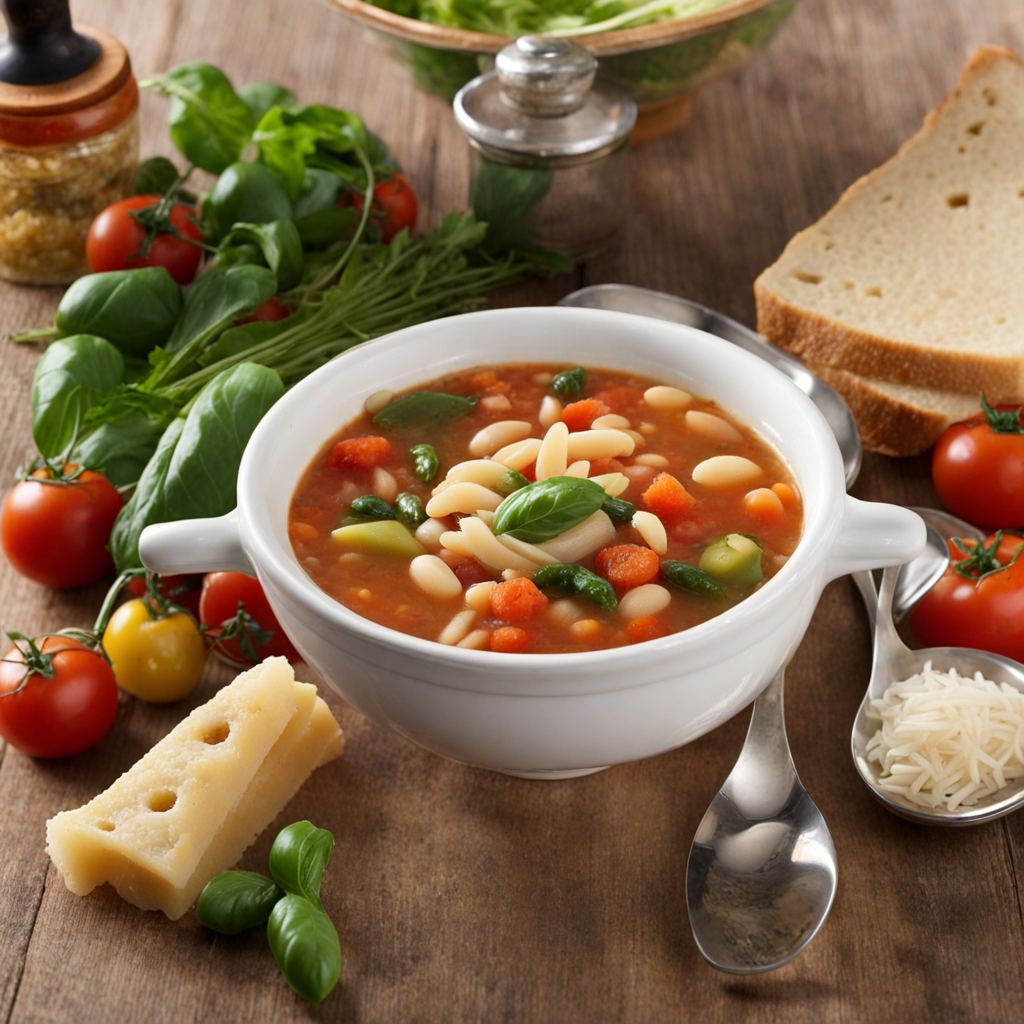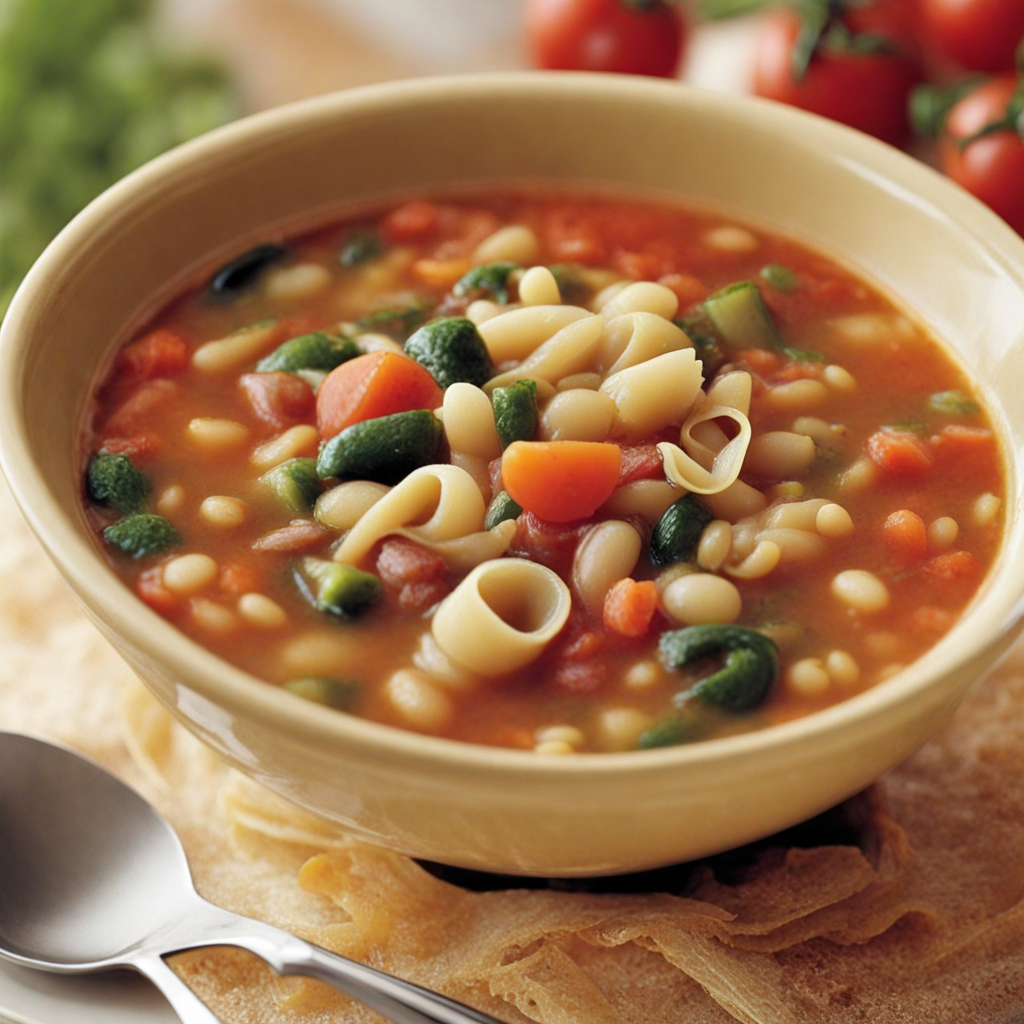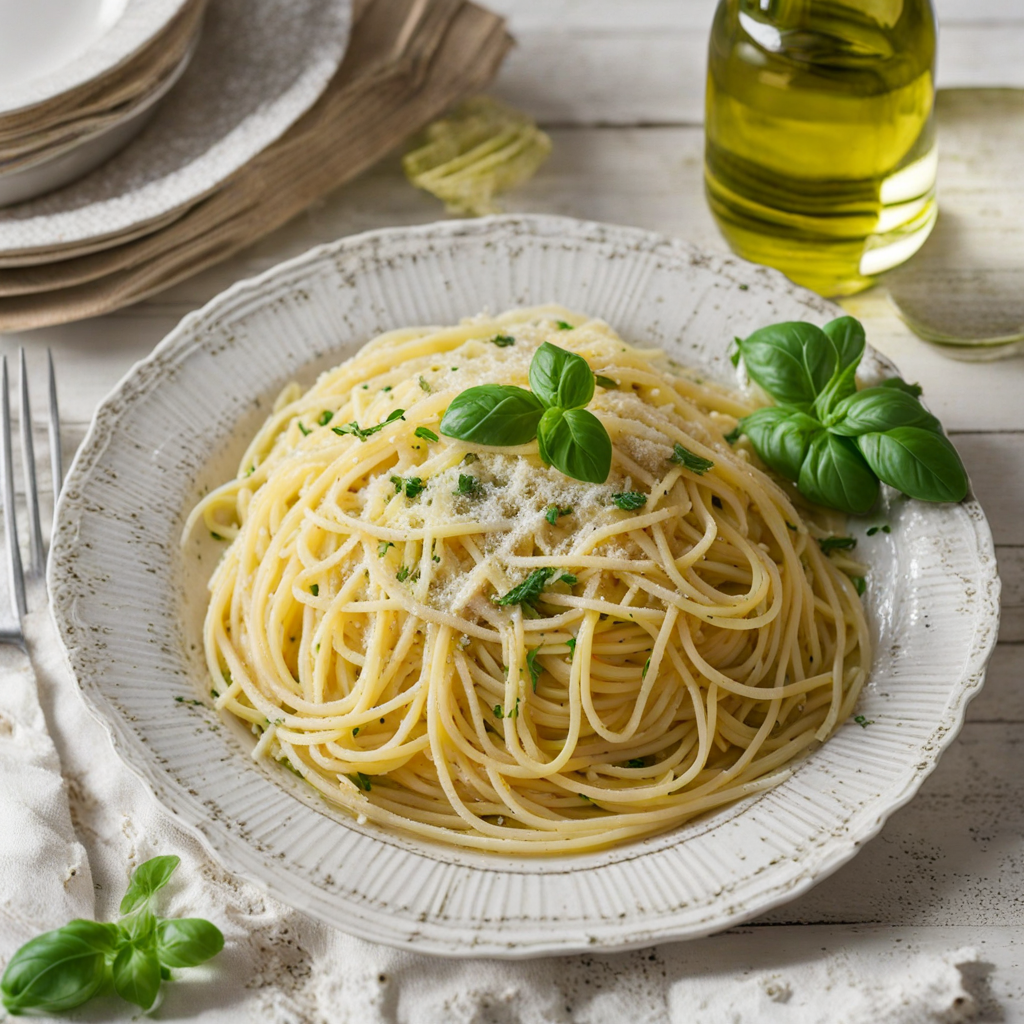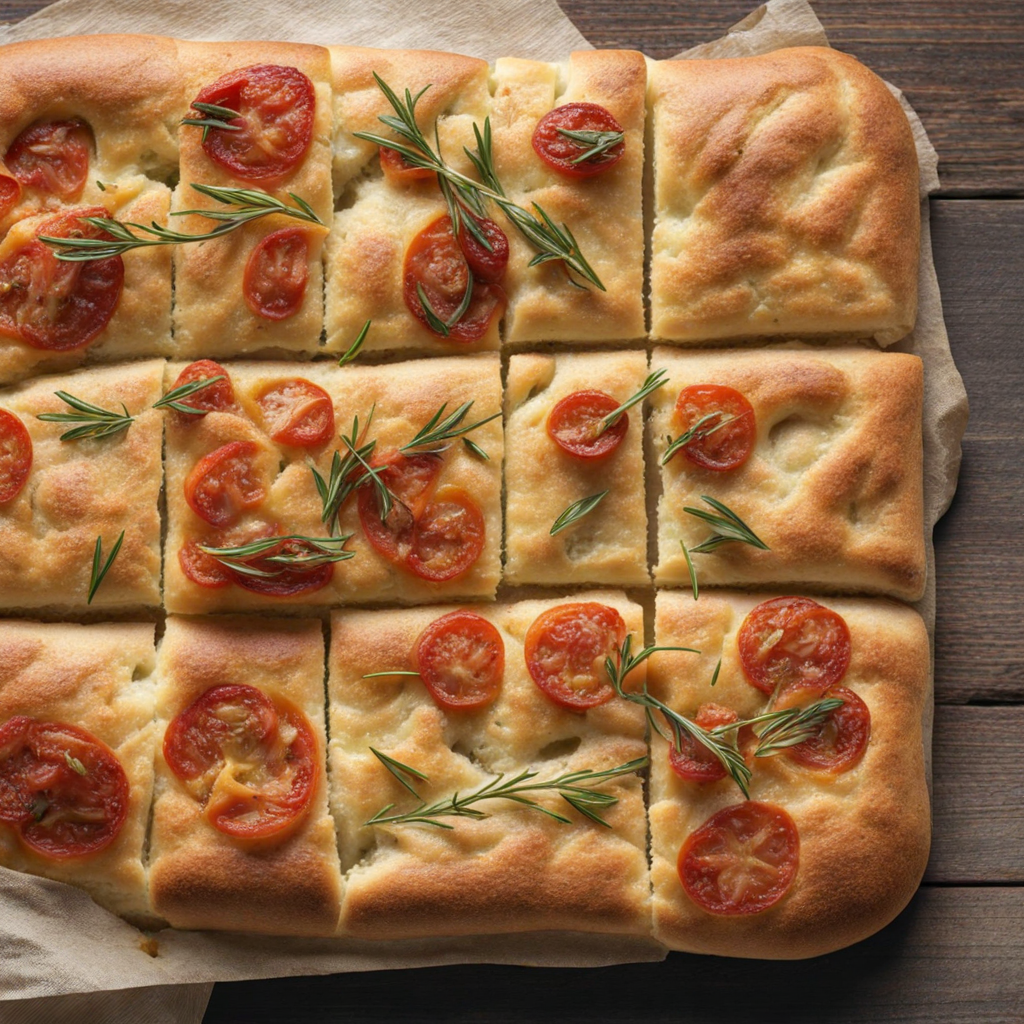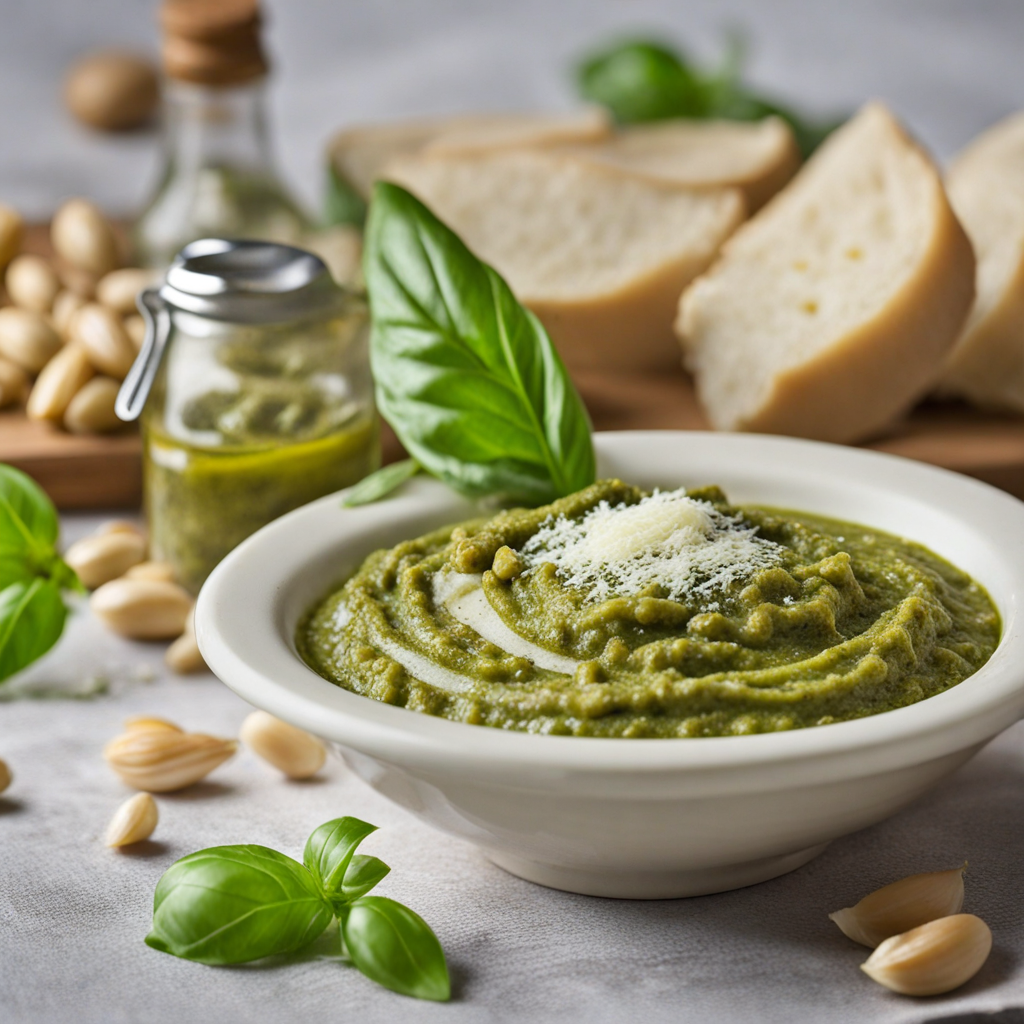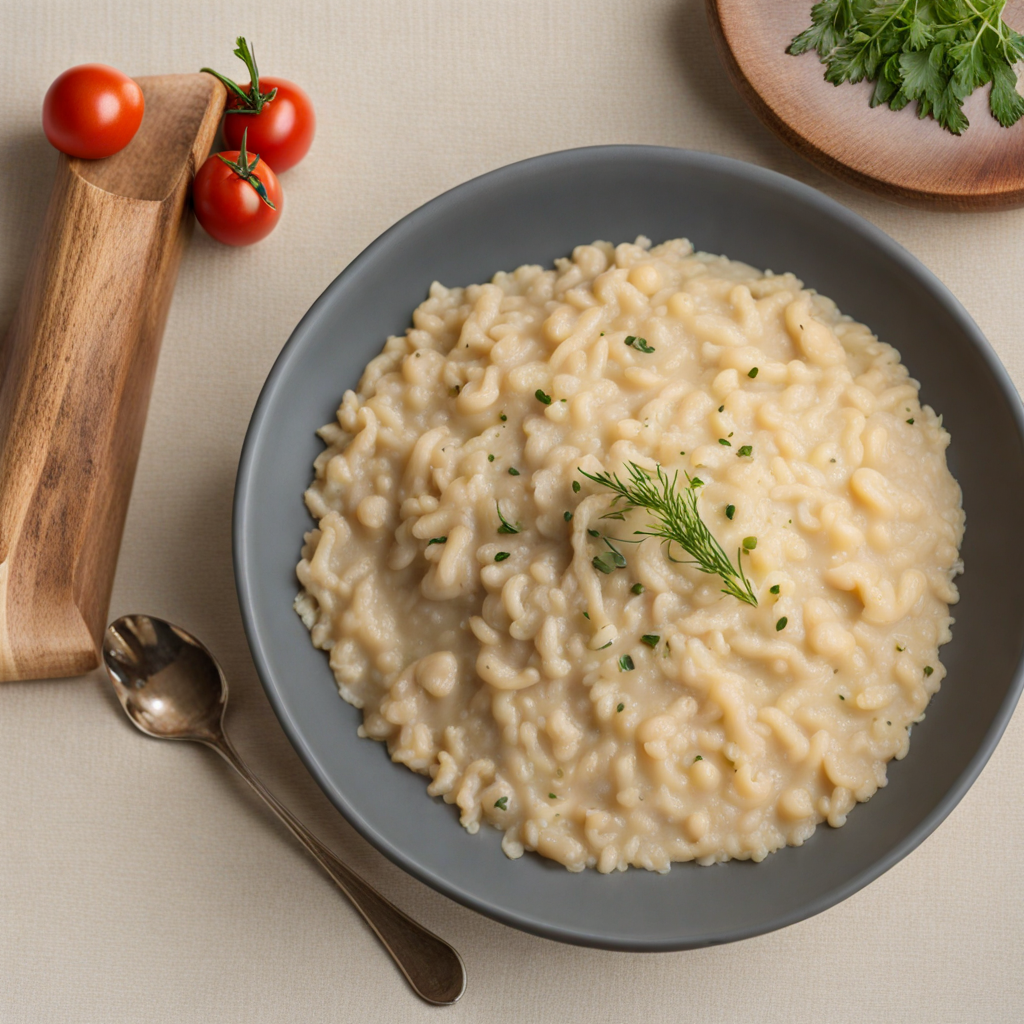Minestrone
Minestrone is a hearty Italian soup that embodies the essence of rustic comfort food. Traditionally, it is made with a variety of seasonal vegetables, which can include carrots, celery, onions, and tomatoes. The vibrant colors and fresh ingredients create a visually appealing dish that is both nourishing and satisfying. Often, the soup is enriched with the addition of beans, pasta, or rice, making it a versatile meal that can be tailored to individual preferences and what is available in the pantry. One of the most delightful aspects of minestrone is its ability to adapt to the changing seasons. In spring, it might include tender greens like spinach or peas, while in the fall, root vegetables and hearty squash take center stage. The broth is typically flavored with aromatic herbs such as basil, oregano, and thyme, which not only enhance the overall taste but also evoke the fragrant landscapes of Italy. Each spoonful is a celebration of fresh produce that bursts with flavor and warmth. Served hot, minestrone is often accompanied by a drizzle of extra virgin olive oil and a sprinkling of grated Parmesan cheese, adding richness and depth to the dish. It is a beloved staple in Italian households, cherished for its comforting qualities and the sense of togetherness it fosters. Whether enjoyed as a starter or a main course, minestrone offers a delightful introduction to the vibrant and wholesome flavors of Italian cuisine, inviting you to savor each bite while discovering the unique tapestry of tastes that represent the heart of Italy.
How It Became This Dish
Origin of Minestrone Minestrone, a hearty vegetable soup, has roots deeply embedded in the agricultural traditions of Italy. Its origins can be traced back to ancient Rome, where a basic vegetable broth was enjoyed by the lower classes. The name "minestrone" itself derives from the Italian word "minestra," meaning soup or broth, and it is the augmentative form, indicating a larger, more substantial dish. The exact origins are somewhat nebulous, but historical records suggest that the soup evolved from a variety of peasant dishes that utilized whatever vegetables were in season, making it a staple in Italian households. The earliest versions of minestrone would have likely consisted of simple ingredients such as beans, greens, and grains, reflecting the agrarian lifestyle of the time. The Roman poet Horace mentioned a dish made of legumes that could be considered a precursor to minestrone. As Italy transitioned through various periods, including the Middle Ages and the Renaissance, the soup began to take on different regional characteristics influenced by local produce and culinary practices. \n\n Cultural Significance Minestrone is more than just a dish; it represents the Italian philosophy of utilizing local, seasonal ingredients. It embodies the concept of "cucina povera," or "poor kitchen," which emphasizes frugality and resourcefulness in cooking. This philosophy arose from the necessity of making the most of limited resources, particularly during times of famine or hardship. The soup became a symbol of sustenance and comfort for the working class, often served in large quantities to feed families. Over time, minestrone evolved into a dish that transcended socio-economic boundaries. It became a communal food, often prepared in large pots and shared among family and friends. This act of sharing food reflects the Italian values of family, hospitality, and togetherness. In Italy today, minestrone is a common feature in homes, restaurants, and festive occasions, showcasing a culinary tradition that binds people across generations. \n\n Regional Variations The beauty of minestrone lies in its adaptability, which has led to numerous regional variations across Italy. Each area boasts its own take on the soup, showcasing the diverse agricultural landscapes and culinary traditions of the country. In Northern Italy, for instance, minestrone is often heartier, incorporating ingredients like potatoes, rice, and a variety of beans. The addition of pesto, particularly in Liguria, imbues the soup with a vibrant flavor, reflecting the region’s affinity for fresh herbs. Conversely, in Southern Italy, minestrone tends to be lighter and may include ingredients like tomatoes, zucchini, and eggplant, reflecting the warm climate and the prevalence of Mediterranean vegetables. The use of pasta is also common in many southern variations, creating a more substantial meal. These regional differences highlight the importance of local produce and culinary customs, showcasing how minestrone can be tailored to suit different tastes and ingredients. \n\n Evolution Through Time As Italy underwent various political and social changes over the centuries, so too did minestrone. The unification of Italy in the 19th century brought about a sense of national identity, which was reflected in the cuisine. Minestrone began to be recognized as a national dish, with each region promoting its unique version as part of Italy's culinary heritage. The publication of cookbooks in the late 19th and early 20th centuries further popularized minestrone, standardizing recipes while still allowing for regional adaptations. The 20th century also saw the introduction of canned and packaged versions of minestrone, making it accessible to a broader audience. While these modern interpretations may not capture the depth and freshness of a homemade version, they reflect the ongoing evolution of the dish in response to changing lifestyles and food availability. Additionally, the rise of vegetarianism and health-conscious eating in recent decades has led to a resurgence in the popularity of minestrone as a nutritious, plant-based meal option. \n\n Global Influence Minestrone's journey is not confined to Italy alone; it has made a significant impact on global cuisine. Italian immigrants brought their culinary traditions with them to various parts of the world, particularly to the United States, Argentina, and Australia. In these countries, minestrone became a beloved comfort food, often adapted to include local ingredients and flavors. For instance, in the United States, minestrone may feature kidney beans and a broader array of vegetables, reflecting the diverse immigrant communities that have influenced American cooking. The dish has also been embraced by various culinary movements, including the slow food movement, which emphasizes the importance of traditional food practices and local sourcing. Restaurants worldwide now feature minestrone on their menus, often incorporating gourmet twists, such as truffle oil or artisanal bread, while still honoring the soup's humble beginnings. \n\n Conclusion: A Timeless Classic Today, minestrone stands as a testament to Italy's rich culinary history. It is a dish that evolves with the seasons, celebrating the bounty of local produce while remaining true to its roots. Whether enjoyed as a simple family meal or served in a fine dining setting, minestrone continues to capture the hearts and palates of people around the world. Its significance as a symbol of Italian culture, community, and culinary ingenuity ensures that it will remain a beloved dish for generations to come.
You may like
Discover local flavors from Italy


